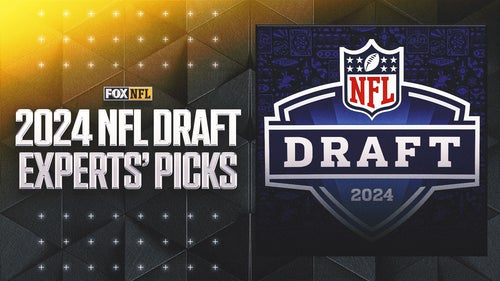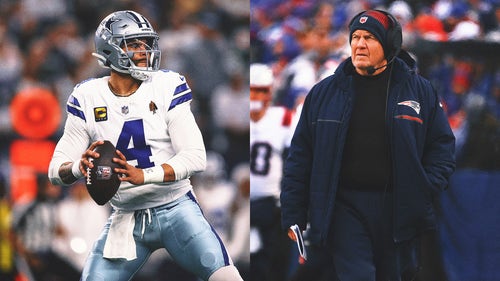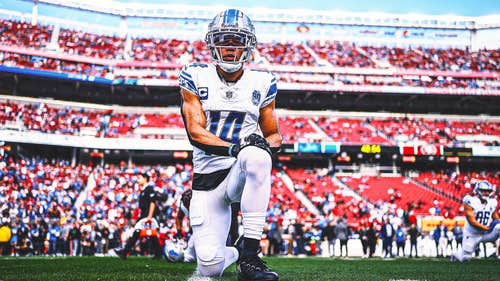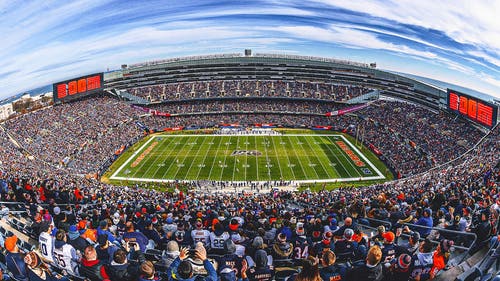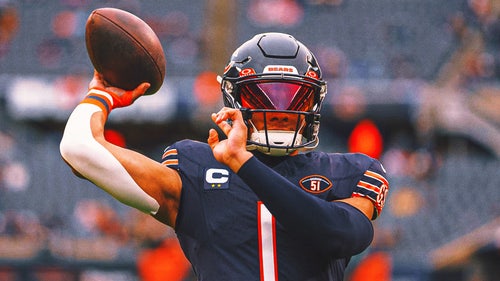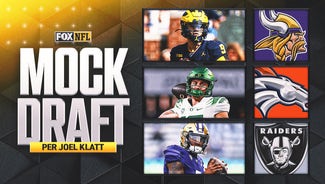
The formula for renewed NFL success
You can hear the rumbling already. New Year’s Eve this year will be Black Monday in the NFL, the day when the hammer comes down on more than one general manager and head coach, as teams turn from a disappointing season and start to move — as quickly as possible — in another direction.
On one hand, it’s absurd that so many of the firings will come down on the same day; on the other hand, if your team is going to be hiring a new general manager, and that person will be in turn hiring a new head coach, and that person in turn will be hiring a new staff, you want to strike quickly, when you have the broadest field of desirable candidates at every level.
Each team will be looking for that right formula to turn the fortunes of their franchise around. Over the last few years that formula seems to be hiring a new coach and then acquiring your franchise quarterback at the same time.
Of course, that’s easier said than done. Current playoff teams such as Houston, Baltimore, Cincinnati, Atlanta, Green Bay and Indianapolis did just that.
In 2008 the Falcons, Ravens and Dolphins were all in need of a new direction. Atlanta had just come through the Michael Vick and Bobby Petrino debacle. Miami had seen Nick Saban walk after a tough start, and the organization had decided they had seen enough after Cam Cameron went 1-15. The Ravens had fallen to 5-11 and were empty at the quarterback position.
What the three teams did offered a stark contrast in how organizations choose to build. Both Atlanta and Baltimore hired defensive coaches, John Harbaugh and Mike Smith, and then spent the third and 18th picks, respectively, on quarterbacks Matt Ryan and Joe Flacco. By contrast, Miami hired offensive line coach Tony Sparano from the Cowboys and bypassed Ryan, using the first pick overall on offensive tackle Jake Long. Each made the playoffs that year.
Ryan and Flacco have led their team to the playoffs every year since, except for when Atlanta went 9-7 and just missed qualifying in 2009. Miami spiraled down to below .500 each of the remaining seasons, going through half a dozen quarterbacks in the process until Sparano was fired at the end of last year. They subsequently hired Joe Philbin from the Packers, and he made Ryan Tannehill the eighth overall pick in 2012. I’ve been asked: If the Dolphins had drafted Ryan instead of Long, would Sparano still have his job today? Yes. No disrespect to Long, who’s a fine player, but you pass on a franchise quarterback at your peril.
The alignment of coach and quarterback doesn’t have to be a draft choice. After Dom Capers tried working the formula for the Houston Texans in 2002, drafting David Carr, Gary Kubiak took over and brought in Matt Schaub from the Atlanta Falcons, to start a rebuilding phase that has culminated in back-to-back playoff berths for the Texans in 2011 and 2012. Sean Payton, upon taking over in New Orleans in 2006, pushed the doctors aside and signed Drew Brees and took the Saints to the Super Bowl.
Of course, this doesn’t always work. When Scott Pioli was hired in Kansas City, he staked his reputation on bringing in Matt Cassel from New England. Though there were flashes — the Chiefs going to the playoffs in 2010 — they were unsustainable, and Cassel will likely be moving on after this season. (Pioli may be joining him on a flight out of Kansas City; we’ll likely know more by Monday.)
Tom Coughlin knows the formula well, trading for Mark Brunell in 1995, which led to an eight-year run in Jacksonville. When he got to the Giants, the team traded for Eli Manning in the 2004 draft, building a two-time Super Bowl champion around him.
Bill Belichick had to learn The Formula the hard way, floundering in Cleveland with a losing record and cycling old quarterbacks through the lineup. When he got the job in New England he went with holdover Drew Bledsoe and went 5-11 his first year. When he started 1-3 the following season, things looked dire until a little-known sixth-round draft choice took over for the injured Bledsoe. Tom Brady became better known quickly. The rest is history, in this case the history of the most successful franchise of the 21st Century.
Indianapolis hit the lotto twice, selecting Peyton Manning first overall in 1998 when the organization changed directions, then again hiring a defensive-minded head coach, Chuck Pagano, before drafting Andrew Luck first overall this year. Early signs are positive, to say the least. What Luck has done is what every good quarterback does with a rebuilding team: He gives the team a chance in games they may otherwise not have any realistic hope of winning. And knowing he’s there for the foreseeable future will make it easier for general manager Ryan Grigson to continue building the team in the future.
Of course, it goes without saying that you have to get both parts right. History is replete with drafted saviors at quarterback that have gone wrong. And as we coaches all know there are three certainties in life: death, taxes and that you cannot survive missing on a first-rounder at quarterback, even if your previous track record is good.
It is rare, but if you last long enough in this league you will have to work The Formula more than once. Andy Reid took over an abysmal Eagles franchise in 1999 and drafted Donovan McNabb. The Eagles enjoyed sustained success, with five trips to the NFC Championship game and an appearance in a Super Bowl. Reid tried to do it again in 2010, transitioning McNabb out of the starter’s role and elevating the redeemed Michael Vick. Three years of performances falling below expectations and now Reid — previously the dean of NFL coaches, and among the most respected in the game — appears to be headed out of Philadelphia.
In 1995, Jeff Fisher took over the then-Houston Oilers and drafted Steve McNair. Together they had an 11-year run of success. In 2006, he took Vince Young with the third overall pick, and despite moments of pure brilliance, that worked less well — both Young and Fisher were gone by the end of the 2011 season. Fisher, though, learned his lesson. With multiple jobs to choose from, he wound up going to St. Louis, where the Rams have made big improvements this season. Fisher recognized he had a good quarterback in Sam Bradford, and he dealt the Rams high draft pick for a ransom from Washington (desperate to trade up for Robert Griffin III), in a deal that likely helped both teams. The future looks bright in St. Louis. The Rams have their quarterback in place, and now have the picks to surround Bradford with a stronger offensive line, and more weapons at the receiver positions.
Among the teams firing coaches Monday, most will be desperately in need of a quarterback. The problem with The Formula this year, though, is that franchise quarterbacks are thin. A lot of people suspect that Matt Barkley is closer to Matt Leinart than to Andrew Luck, and that Geno Smith is closer to David Carr than Robert Griffin III.
That will complicate the process for the most quarterback-needy teams. If you don’t get a quarterback in the draft, do you go the veteran route and try to bring in a Matt Flynn (who has a big contract and a seat on the bench in Seattle) or an Alex Smith (a triple-digit quarterback rating and a clipboard in his hands in San Francisco)? Those will be the dominant questions to be answered in the months after Black Monday, when the smoke has cleared.






































































































































